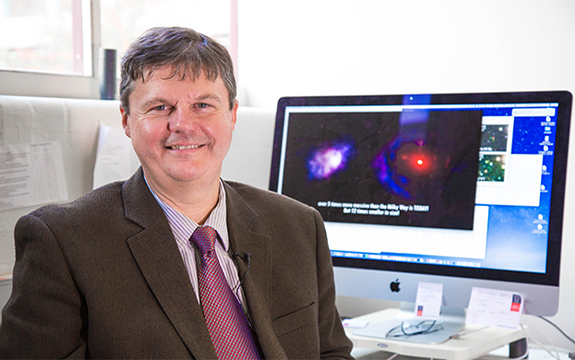Karl Glazebrook elected to Australian Academy of Science

In Summary
- World-leading observational astronomer named Fellow of Australian Academy of Science
- National award honours lifetime achievement
Distinguished Professor and Director of Swinburne’s Centre for Astrophysics and Supercomputing, Professor Karl Glazebrook has been elected to the Australian Academy of Science.
He was one of 21 scientists elected by their Academy peers, following a rigorous evaluation process.
Professor Glazebrook is a world-leading observational astronomer whose research has led to major advances in our understanding of the evolution of galaxies and the Universe across cosmic time.
“Professor Glazebrook leads one of the premier astronomy research centres in Australia,” says Swinburne Deputy Vice-Chancellor Professor Aleksandar Subic. “Swinburne is proud to have one of our highly cited researchers acknowledged by the Australian Academy of Science.”
Professor Glazebrook was thrilled to be elected to the Academy by his peers.
“This is such a huge honour and recognition from my colleagues of my accomplishments over the years. It’s been fantastic news and I’m really excited and pleased,” Professor Glazebrook says.
“I am flattered and honoured, but truly it would not have been possible without the great research teams, friends, family and people I have worked with over the years and the amazing support Swinburne has given me over the past decade.”
Professor Glazebrook uses large telescopes on the ground such as the W M Keck and Gemini observatories in Hawaii and the Hubble Space Telescope. He recently led a team that discovered a massive dead-red galaxy.
Professor Glazebrook studied at Cambridge and received his PhD from the University of Edinburgh in 1992. He did post-doctoral work in Durham and Cambridge before becoming staff astronomer at the Anglo-Australian Observatory in Sydney. In 2000 he became a Professor at Johns Hopkins University in Baltimore and was appointed a Professor at Swinburne in 2006.
Professor Glazebrook is Chair of the International Facilities Working Group of the Australian Astronomy Decadal 2016-2025 Plan.
His work has been cited more than 39,000 times in the literature of astronomy.
The Fellowship is one of the highest honours an Australian scientist can receive for their significant research achievements in the field of natural science. The Academy’s total fellowship now includes 524 scientists.

